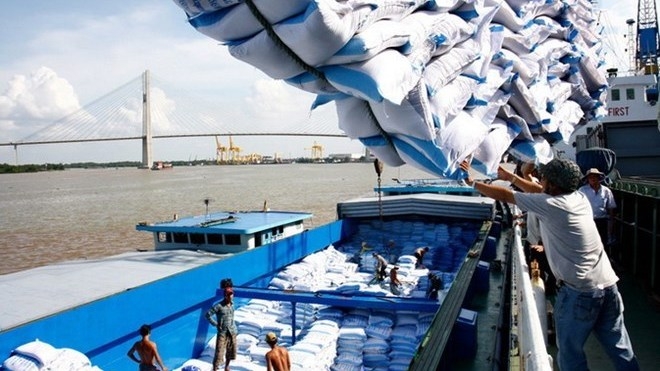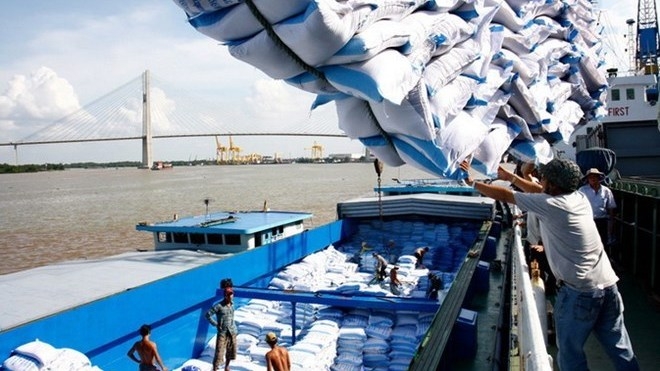



Rice bags are loaded onto a barge for shipment (Photo: VNA)
|
Since the beginning of the year, Vietnamese rice exports have
witnessed many positive signs. The country’s average rice export volume reached
2.16 million tonnes in the first four months of this year, bringing home US$1.1
billion, up 21.7% in volume and 37.7% in value. China remained the largest
importer, accounting for 29.1% of the market share in the first three months of
2018. In the first quarter of 2018, the Indonesian market increased 378 times
over the same period last year.
In addition to the 300,000 tonnes of rice that are being delivered
to Indonesia by the end of July, domestic enterprises are also boosting exports
of 130,000 tonnes to the Philippines. Meanwhile, the demand for rice imports
from Malaysia also increased, up 3.3 times over the same period in 2017.
It can be seen that the increase of rice exports volume in the
first months of 2018 was attributed to the continuous demand in many markets. Moreover,
the rice exported to countries, such as the Philippines and Malaysia, is middle
quality rice, so Vietnamese enterprises could fully meet their demand. The
price of rice increased thanks in part to increased demand, as well as the
results of the restructuring of the rice sector in the direction of reducing
the middle and low quality rice segment, while increasing the high quality
rice.
Previously, Vietnam mainly exported regular rice such as IR 504.
Now the country has begun to export jasmine rice and sticky rice, among others.
In 2017, high quality rice accounted for 81% of the rice export structure. It
should also be mentioned that the reduction of the area of regular rice
cultivation, leading to the decrease in rice yield is also a factor that keeps
rice prices stable, sometimes with increases due to high demand.
A strong selection of the rice market in recent years has become
more or less a motivation for domestic businesses to focus on improving rice
quality and expanding export markets. On the other hand, when the supply of
high-quality rice is abundant, meeting the demands of the markets, Vietnam’s
rice exports will no longer depend much on traditional markets.
It is forecast that Vietnam is expected to export about 6.5
million tonnes of rice, up 700,000 tonne compared to 2017. It is necessary to
maintain the growth momentum by quickly catching demand as well as market
volatility. Furthermore, the structure of high-quality rice must firmly remain,
with regular rice accounting for no more than 20% of exports. Once the supply
of rice is controlled and the quality of rice is enhanced, it is certain that
Vietnamese rice production, processing and exports will establish a firm
foothold in the market.
Source: NDO